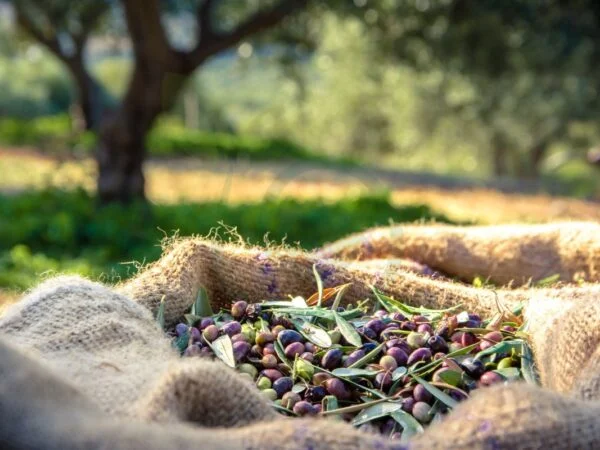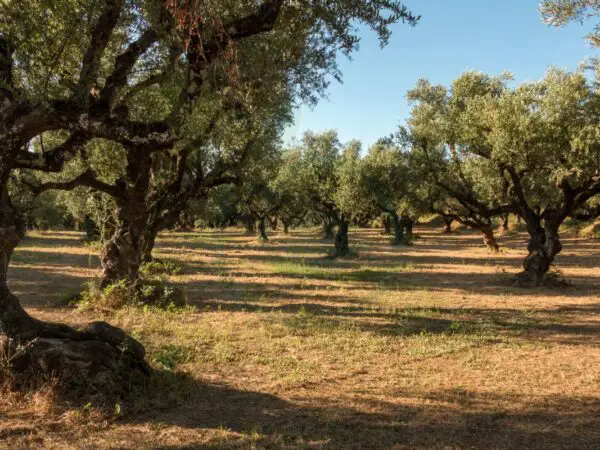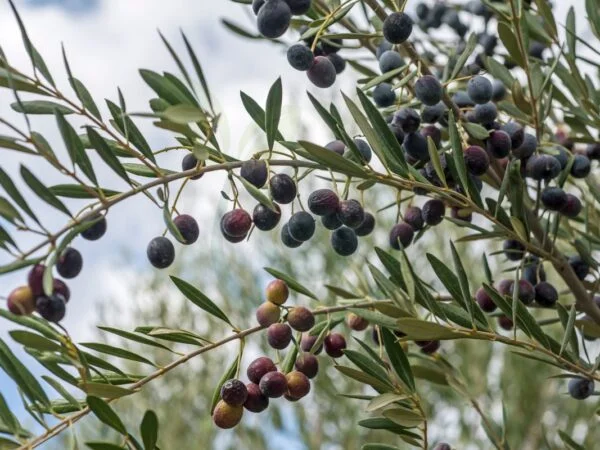Curious about when the ideal time is for planting olive trees? Let's delve into this ancient practice that dates back centuries. Understanding the historical significance can shed light on why timing matters. Olive cultivation has been intertwined with human history, symbolizing peace, prosperity, and sustainability. By grasping the seasonal nuances of planting these majestic trees, you can ensure a bountiful harvest in the future. Stay tuned as we uncover the optimal moments to sow your olive tree seeds and nurture them towards growth and fruition.
Key Takeaways
-
Planting olive trees: The best time to plant olive trees is in the spring after the last frost to allow them to establish before winter.
-
Location matters: Choose a sunny place with well-draining soil for optimal growth and fruit production.
-
Soil is key: Ensure the soil pH is between 5.5 and 7.5, and avoid waterlogged conditions to prevent root rot.
-
Proper planting: Dig a hole twice as wide as the root ball, backfill with soil, and water thoroughly after planting to reduce transplant shock.
-
Propagation tips: Olive trees can be propagated from cuttings or by layering, providing an economical way to expand your orchard.
-
Variety selection: Consider factors like climate, desired fruit characteristics, and tree size when choosing the right olive tree variety for your garden.
Understanding Olive Trees
Growth Characteristics
Olive trees are evergreen and can grow up to 30 feet tall. They have a dense, rounded canopy with gray-green leaves. Their slow growth rate means it takes several years for them to reach maturity. These characteristics make olive trees a long-term commitment for any gardener or farmer.
When considering planting olive trees, it's crucial to account for their eventual size and the time they take to mature fully. For example, if you're looking to create a shaded area in your garden quickly, olive trees may not be the best choice due to their slow growth rate.
-
Pros:
-
Evergreen nature provides year-round beauty.
-
Long lifespan offers decades of fruit production potential.
-
Cons:
-
Slow growth rate requires patience.
-
Large size may not be suitable for all spaces.
Climate and Exposure
Olive trees thrive in Mediterranean climates characterized by hot, dry summers and mild winters. They require full sun exposure for optimal growth and fruit production. While these trees are adaptable to various soil types, they prefer well-drained soil that mimics the conditions found in their native Mediterranean region.
Considering the climate requirements of olive trees is essential when deciding on the best time to plant them. For instance, if you live in an area with harsh winters or limited sunlight, you may need to provide additional care or consider alternative tree species better suited to your environment.
- Key Information:
- Thrive in Mediterranean climates with specific temperature ranges.
- Need full sun exposure for healthy development.
When to Plant Olive Trees
Spring vs. Fall
Spring is the best time to plant olive trees as it allows them to develop strong roots before the scorching summer arrives. In regions with mild winters and enough rainfall, fall planting can also be successful. Local climate conditions play a crucial role in determining whether spring or fall is more suitable for planting.
Consider your area's weather patterns when deciding between spring and fall planting for olive trees. For instance, if you live in a region with harsh summers, opt for spring planting to ensure the young tree has ample time to establish itself before facing extreme heat. Conversely, areas with mild winters may benefit from fall planting due to the favorable growing conditions during this season.
Ideal Conditions
Olive trees thrive in climates characterized by mild winters and hot, dry summers—ideal temperatures range from 70°F to 85°F (21°C - 29°C) during the growing season. These trees require abundant sunlight for optimal growth and should be planted in well-drained soil that prevents waterlogging which can harm their roots.
Ensure minimal humidity around olive trees as excessive moisture can lead to diseases like fungal infections that are detrimental to their health. By providing these ideal conditions of warmth, sunlight, proper drainage, and low humidity levels, you set your olive tree up for success.
Choosing the Right Location
Climate Considerations
Olive trees are hardy and can survive in various climates, but they have their limits. They thrive in dry conditions but may need watering during extended dry periods. Consider your region's climate before planting olive trees to ensure they can flourish. Extreme temperatures, whether freezing cold or scorching heat, can harm olive trees.
When selecting a location for your olive tree, keep in mind that they need full sun exposure for at least six hours daily. Without sufficient sunlight, the tree might struggle to produce fruit and grow weakly. To guarantee optimal growth and productivity, choose a spot that receives abundant sunlight throughout the day.
Soil Requirements
Soil Types
Olive trees are versatile and can thrive in different soil types like sandy, loamy, and clay soils. Well-drained soil that retains water well is crucial for the healthy growth of olive tree roots. Avoid dense, compacted soils as they can lead to waterlogging or root rot issues.
When planting olive trees, consider the type of soil you have in your garden. Sandy soils drain quickly but may need more frequent watering. Loamy soils are a good middle ground with decent drainage and moisture retention. Clay soils hold water well but might require amendments to improve drainage.
Amendments and Fertilization
Before planting an olive tree, enrich the soil by adding organic matter such as compost to enhance nutrient content and improve soil structure. Olive trees do not demand high levels of nutrients but benefit from balanced fertilizers for optimal growth.
Less is more. Apply fertilizer sparingly to avoid overfeeding the tree. Excessive nitrogen levels can hinder fruit production on olive trees; therefore, opt for a balanced fertilizer mix suitable for fruit-bearing plants.
-
Pros:
-
Versatile adaptability to various soil types.
-
Well-drained soil enhances root development.
-
Balanced fertilization supports healthy growth without excessive nutrient requirements.
-
Cons:
-
Over-fertilization with nitrogen can impede fruiting.
Planting Best Practices
Watering Dos and Don'ts
When is the best time to plant olive trees? Plant them in well-draining soil. During the first year, water regularly to help roots establish. Once rooted, olive trees can withstand drought, so deep watering infrequently is preferred. Avoid overwatering to prevent root rot and diseases.
To ensure stability during initial growth stages, young olive trees may need staking support. Use soft ties or tree straps for securing without causing harm. Remember to remove stakes once the tree can stand on its own.
Staking Support
When planting olives, consider using a planting hole twice as wide as the root ball but no deeper than it. This helps roots spread out easily for better growth and nutrient absorption.
Remember that olives thrive in full sun with at least six hours of direct sunlight daily. Ensure proper spacing between trees to allow ample sunlight penetration and air circulation for optimal growth.
Propagating Olive Trees
Key Steps
To successfully propagate olive trees, it is crucial to choose the right planting location. Opt for an area with full sun exposure and well-drained soil. This ensures that the tree receives adequate sunlight and prevents waterlogging.
Next, prepare the soil by adding organic matter to enrich it and improve its quality. Ensure proper drainage in the planting area to prevent water accumulation around the roots. This step is vital for the tree's health and growth.
When planting olive trees, dig a hole that is slightly larger than the root ball of the tree. Gently place the tree in the hole at a suitable depth, ensuring that it stands upright. Then backfill the hole with soil carefully, pressing down gently as you go along.
- Choose a suitable location with full sun exposure
- Incorporate organic matter into soil
- Ensure proper drainage in planting area
- Dig a hole larger than root ball
- Place tree carefully and backfill with soil
Planting olive trees during late winter or early spring when they are dormant is considered ideal for their establishment. During this period, the risk of transplant shock is minimized since there are no active growing processes occurring within the plant.
Varieties of Olive Trees
When is the best time to plant olive trees? Before deciding on a variety, consider local regulations. Some areas have restrictions on planting certain types of olive trees. Check if cross-pollination with another olive variety is necessary for optimal fruit production.
Pruning young olive trees is essential. It helps shape them and removes any damaged or crossing branches. Proper pruning encourages healthy growth and ensures better fruit production in the long run.
Considering local regulations before planting olive trees is crucial to avoid any legal issues down the line. Pruning young olive trees not only maintains their health but also enhances their overall appearance.
Pruning and Maintenance
Pruning Techniques
Prune olive trees in the dormant season to boost airflow and sunlight. This helps the tree thrive. Eliminate dead, diseased, or damaged branches for optimal health. Thinning out the canopy is crucial for better fruit production and overall tree vitality.
When pruning, remember that less is more; avoid excessive cutting as it can harm the tree. By following these techniques, you ensure your olive tree's longevity and productivity.
Care Tips
Mulching around the base of your olive tree keeps moisture in and weeds out. It's like providing a cozy blanket for your plant! Regularly check for pests or diseases; early detection is key to preventing damage.
Inspecting your olive tree regularly allows you to address any maintenance needs promptly. Whether it's staking young branches or conducting routine pruning, staying vigilant ensures a healthy tree.
Problem-Solving for Tree Issues
Diseases and Pests
Olive trees can suffer from various diseases like olive knot, verticillium wilt, and peacock spot. Pests such as the olive fruit fly, scale insects, and aphids can also harm these trees. To combat these issues effectively, proper sanitation plays a crucial role. Regularly monitoring your olive trees is essential to catch any disease or pest infestation early on.
Implementing early intervention strategies is vital in managing olive tree diseases and pests successfully. For fungal diseases like olive knot, using fungicides or copper-based sprays can help control the spread. Integrated Pest Management (IPM) techniques are beneficial for keeping pests at bay without resorting to excessive pesticide use. Seeking advice from local agricultural extension services can provide you with region-specific solutions tailored to your area's unique challenges.
- Proper sanitation helps prevent disease
- Early intervention is key for effective management
- Fungicides control fungal diseases like olive knot
Common Solutions
When facing issues with your olive trees, it's important to have a toolbox of common solutions at hand. Utilizing fungicides or copper-based sprays can effectively tackle fungal infections such as olive knot that might plague your trees. Integrated Pest Management (IPM) techniques offer a holistic approach to pest control by integrating various methods while minimizing pesticide usage.
Consulting with local agricultural extension services is highly recommended when dealing with tree problems since they can provide expert guidance on tackling specific issues prevalent in your region. By combining different strategies like cultural practices and biological controls through IPM techniques, you can address both current problems and prevent future ones efficiently.
- Use fungicides or copper-based sprays for fungal infections
- Implement Integrated Pest Management (IPM) techniques 3 Consult local agricultural extension services for expert advice
Harvesting Olives
Timing and Techniques
Pruning olive trees is essential for their health and productivity. Prune your olive trees during late winter or early spring, just before new growth starts. This timing ensures that the tree can heal quickly from any cuts you make. By using clean, sharp tools, such as pruning shears or a saw, you can make precise cuts without damaging the tree. When shaping young olive trees, selectively remove branches to train them into your desired shape.
Timing is crucial for flavor and quality. Harvest olives when they have reached the desired ripeness for consumption or processing into oil. For short-term preservation of fresh olives, store them in a cool place like a cellar or even in the refrigerator if needed urgently. However, if you plan on storing olives for an extended period, curing them by soaking in brine or preserving them in oil are common methods used to enhance flavor and prolong shelf life.
Storing Olives
After harvesting ripe olives from your trees at their peak maturity point (often changing color), it's important to store them correctly to maintain freshness and taste. Once harvested at the right time—usually when they turn dark purple—store fresh olives immediately either refrigerated or placed in a cool area away from direct sunlight for short-term use.
For long-term storage solutions beyond immediate consumption needs: curing involves soaking freshly picked fruits in water solutions over several weeks until fermentation occurs; alternatively pickling with saltwater brine creates preserved products ideal as snacks later on due largely because flavors change over time depending upon method chosen - whether fermented versus pickled versions which offer different tastes!
You've now got the lowdown on planting olive trees. From selecting the perfect spot to mastering the art of pruning, you're set to grow your very own olive haven. Remember, it's not just about planting a tree; it's about nurturing it like a prized possession. Treat your olive tree like a cherished friend, and it'll reward you with its bountiful harvests.
Now, grab those gardening gloves, pick up your shovel, and get ready to plant those olive trees like a pro! Your future self will thank you for the delicious olives and stunning ambiance you'll create in your garden. Happy planting!
Frequently Asked Questions
When is the best time to plant olive trees?
The best time to plant olive trees is in the spring or fall when temperatures are moderate. Avoid planting during extreme heat or cold to give your tree the best chance of establishing healthy roots.
How do I choose the right location for planting olive trees?
Select a sunny spot with well-draining soil for optimal growth. Ensure there's good air circulation around the tree and that it's protected from strong winds, especially during its early years.
What are the soil requirements for growing olive trees?
Olive trees prefer well-drained soil with a pH level between 6 and 8. They can tolerate various soil types but thrive in sandy loam. Adding organic matter like compost can improve soil structure.
What are some best practices for planting olive trees?
When planting an olive tree, dig a hole twice as wide as the root ball but no deeper than its original container. Gently loosen any tangled roots before placing it in the hole and backfilling with soil.
How can I propagate my own olive trees?
Olive trees can be propagated through methods like hardwood cuttings or layering. Choose healthy branches, follow proper techniques, provide adequate moisture, and wait patiently for successful propagation results.
Image Source: Paid image from CANVA




